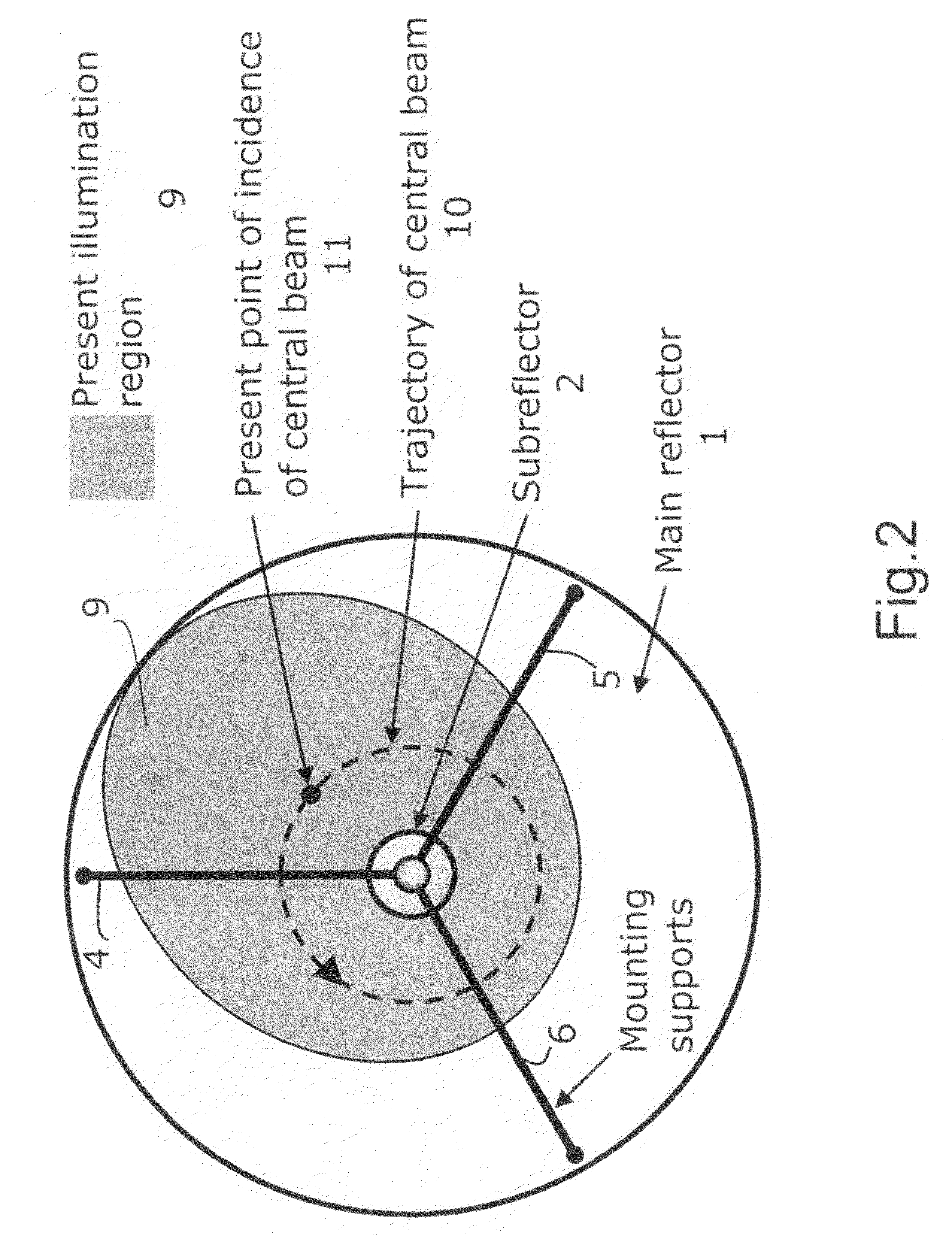Device for two-dimensional imaging of scenes by microwave scanning
a two-dimensional imaging and microwave scanning technology, applied in the direction of measurement devices, instruments, antennas, etc., can solve the problems of mass inertia, inability to obtain inability to achieve a sufficient image size, etc., to achieve acceptable image quality, short time, and the effect of avoiding high processing and expenditur
- Summary
- Abstract
- Description
- Claims
- Application Information
AI Technical Summary
Benefits of technology
Problems solved by technology
Method used
Image
Examples
case 1
Check of Persons:
[0072]The following specifications are assumed for the system design:
[0073]
Central frequency:f0 = 90 GHz,System band width:B = 5 GHz,System noise temperature:Tsys = 800 K,Angular resolution in the E- and H-plane:ΔΘE = ΔΘH = ΔΘ = 0.5°,Distance of the focal plane (scene):R0 = 3 m,Size of scene, height × width:ΘH = 41°, ΘB = 20°,Overlapping factor:u = 0.1,Scanning factor:s = 0.5,Time required per image:Timage = 1 s.
[0074]The overlapping factor indicates the extent to which successive resolution cells shall overlap each other; thus, in case of u=0, there is no overlap at all; at u=1, the overlap would be 100%, and the antenna lobe would not move any further so that no imaging would be possible. At u=0.1, consequently, the overlap would be 10%.
[0075]The scanning factor indicates by how many resolution cells the antenna lobe is allowed to move on within the integration time. The integration time indicates how long the measuring signal is allowed to continue to be integrat...
case 2
Observation:
[0087]The following specifications are assumed for the system design:
[0088]
Central frequency:f0 = 1.42 GHzSystem band width:B = 20 MHzSystem noise temperature:Tsys = 600 KAngular resolution in the E- and H-plane:ΔΘE = 0.7°, ΔΘH = 1.0°Satellite height above the earth:R0 = 750 kmSize of scene (strip width):WB = 1500 kmOverlapping factor:u = 0.1Scanning factor:s = 0.5
[0089]It is provided that the angular resolution is smaller one direction than in the other so as to reduce the projection effect for the resolution cell on the surface of the earth. Thereby, a substantially circular resolution cell is generated, as often desired by data users.
[0090]The effect of the earth's curvature is neglected here, and a flat earth is assumed. In a more-detailed analysis, this aspect can be easily taken into consideration.
[0091]Only one desired strip width will be predetermined because the satellite is to pick up data in a continuous manner and the indication of an image length will thus b...
PUM
 Login to View More
Login to View More Abstract
Description
Claims
Application Information
 Login to View More
Login to View More - R&D
- Intellectual Property
- Life Sciences
- Materials
- Tech Scout
- Unparalleled Data Quality
- Higher Quality Content
- 60% Fewer Hallucinations
Browse by: Latest US Patents, China's latest patents, Technical Efficacy Thesaurus, Application Domain, Technology Topic, Popular Technical Reports.
© 2025 PatSnap. All rights reserved.Legal|Privacy policy|Modern Slavery Act Transparency Statement|Sitemap|About US| Contact US: help@patsnap.com



